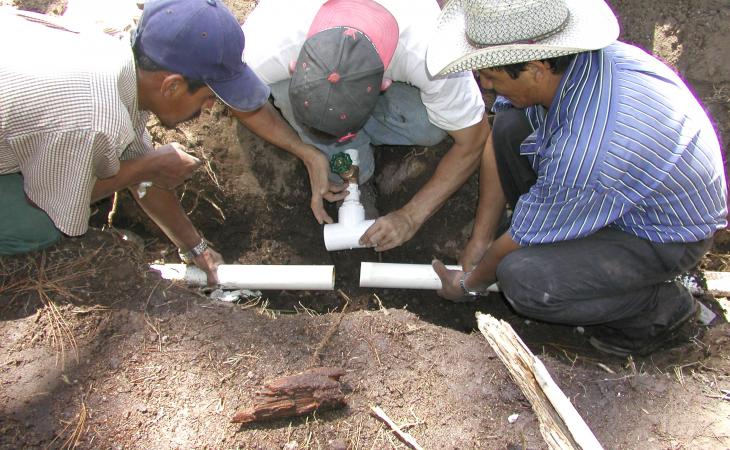This website uses cookies so that we can provide you with the best user experience possible. Cookie information is stored in your browser and performs functions such as recognising you when you return to our website and helping our team to understand which sections of the website you find most interesting and useful.
News
This Pipe Could Save Someone’s Life
The towns of Belen Manazapa and Monquecagua in Honduras have brand new PVC pipelines.
With much digging and hauling—and clearing a path through the jungle—the community of Belen Manazapa laid 6.7 miles of PVC pipeline and built a new water system for their town of 400 people. In addition to the PVC supply line, the new water system includes a new spring source, a tank, a chlorine disinfection unit, and a PVC unit distribution network. A total of 72 families in the community donated 30 days of labor each to build their new clean water system. Meanwhile, over in Monquecagua, 461 families donated 15 days of labor each to install a new spring source, 2.5 miles of PVC pipe, a 40,000 gallon tank, and a chlorine disinfection unit.
This pipe—and the clean water that it carries—could save someone’s life.
The World Health Organization (WHO) estimates that every minute, somewhere in the world, a child dies from a water-related disease.
In Latin America and the Caribbean alone, 394 million people lack access to safe drinking water, according to statistics from water.org.
This project—and the people in these villages—are doing their part to make a difference.
“The dirty water we were drinking before caused lots of diseases,” says Jairo Pineda, a water association member in Belen Manazapa. “It also caused a lot of malnutrition among children. But now that we are drinking clean, chlorinated water, the people are much healthier. This has been the benefit of this project, and we are very grateful.”
The spring pipeline construction project is part of “Pipeline for Life,” an initiative that brings lifesaving water purification and distribution systems to remote Honduran communities. The project is run by volunteers from Water Engineers for the Americas (WEFTA), with support from the Vinyl Institute (VI) and the American Chemistry Council’s Chlorine Chemistry Division (ACC/CCD).
It’s a sustainable approach that’s worked in the past.
Investments in water pay off. WHO estimates that the lack of access to water results in $24 billion in lost economic value each year due to the hours that women and children spend gathering water. WHO further estimates that $1 invested in water and sanitation provides, on average, a $4 economic return.
That investment has already paid off for the town of Yamaranguilla, where the population has doubled in the decade since WEFTA, VI, ACC/CCD and the community first built a PVC pipeline to transport safe, potable water.
This spring, WEFTA worked with the community there to add capacity and alleviate water outages. The added capacity, which came with a 240-ft deep well with PVC well casing and a quarter mile of new PVC pipe, will supply enough water to connect an additional 1,670 people (or 5,470 people total) to clean drinking water.


